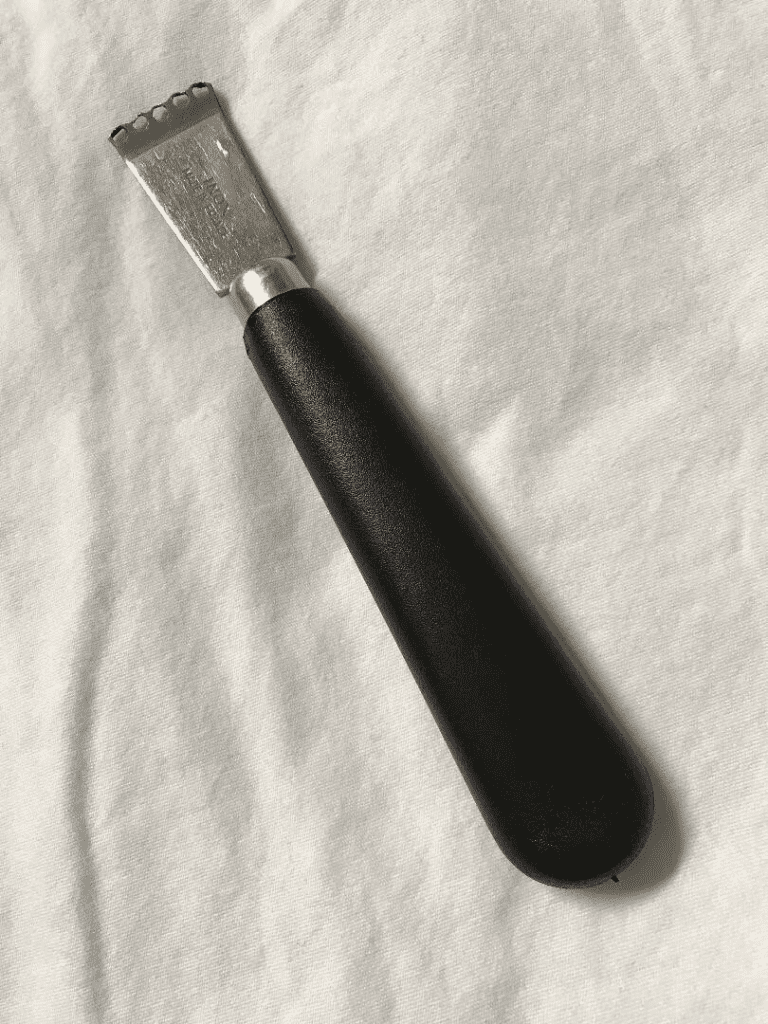I’m not sure you’ll recognize this. If you do, you’re likely from an older generation.
The vintage fruit zester is more than just a kitchen tool; it’s a symbol of culinary tradition and ingenuity. This unassuming gadget, which dates back to the late 19th and early 20th centuries, has played a significant role in the evolution of cooking, particularly in the art of flavor enhancement. In this article, we’ll explore the history, usage, and enduring legacy of the vintage fruit zester, celebrating its place in both historical and modern kitchens.
A Brief History of the Vintage Fruit Zester

The vintage fruit zester emerged during a time when home cooking was a central part of daily life, and culinary techniques were becoming more sophisticated. In the late 1800s and early 1900s, cooks sought ways to infuse their dishes with fresh, vibrant flavors. Citrus fruits, known for their aromatic and flavorful peels, became a popular ingredient in a wide variety of recipes. The need to efficiently extract this zest without including the bitter pith underneath led to the invention of the fruit zester.
Early fruit zesters were typically made from durable metals like stainless steel or tin, designed to withstand the rigors of frequent use. These tools featured a handle for grip and a serrated edge or small grater to scrape the zest from the fruit. The design was simple yet effective, allowing cooks to add a burst of citrus flavor to their dishes with ease.
How to Use a Vintage Fruit Zester
Using a vintage fruit zester is a straightforward process, but it requires a bit of technique to achieve the best results. The primary purpose of the zester is to remove the thin, colorful outer layer of citrus fruits, known as the zest, without cutting into the bitter white pith beneath.
Step-by-Step Guide:
- Select Your Citrus Fruit: Choose a fresh, unwaxed citrus fruit, such as a lemon, lime, or orange. Wash the fruit thoroughly to remove any dirt or residues.
- Position the Zester: Hold the fruit in one hand and the zester in the other. Position the zester’s serrated edge or grater against the surface of the fruit.
- Zest the Fruit: Gently drag the zester across the fruit’s surface, applying light pressure. The zester will scrape off tiny shavings of the zest, which can be collected in a bowl or directly over the dish you’re preparing.
- Avoid the Pith: Be careful not to press too hard, as this can cause the zester to penetrate the pith, which is bitter and can affect the flavor of your dish.
Enhancing Recipes with Citrus Zest
The zest extracted using a vintage fruit zester can be used in a variety of culinary applications, adding a fresh, tangy flavor to both sweet and savory dishes. Here are a few ways to incorporate citrus zest into your cooking:
- Baking: Add lemon or orange zest to cakes, cookies, and muffins for a bright, citrusy kick.
- Marinades and Dressings: Incorporate zest into marinades for meats or dressings for salads to enhance the overall flavor profile.
- Garnishing: Use zest as a garnish for cocktails, desserts, or savory dishes, adding both flavor and a pop of color.
- Infusions: Create flavored oils, sugars, or salts by mixing zest with the base ingredient and allowing it to infuse.
The Legacy of the Vintage Fruit Zester

Despite the advent of modern kitchen gadgets, the vintage fruit zester has retained its appeal among culinary enthusiasts and collectors alike. Its simple design, coupled with its effectiveness, makes it a beloved tool in both professional and home kitchens.
Collectors’ Item: Vintage fruit zesters are highly sought after by collectors of antique kitchen tools. These zesters are valued not only for their functionality but also for their historical significance and craftsmanship. Many vintage zesters feature unique designs, such as ornate handles or specialized grating surfaces, making them a charming addition to any kitchen collection.
A Connection to the Past: The vintage fruit zester serves as a tangible link to the culinary traditions of the past. In an era when cooking was often done from scratch and flavor was paramount, the zester played a crucial role in elevating dishes. Today, using a vintage zester can evoke a sense of nostalgia, allowing cooks to connect with the techniques and flavors that have been cherished for generations.
Why the Vintage Fruit Zester Still Matters Today
In a world where high-tech kitchen gadgets are readily available, the vintage fruit zester remains relevant for several reasons:
- Simplicity: The straightforward design of the zester makes it easy to use and maintain. There are no batteries to replace, no complex mechanisms to understand—just a simple tool that gets the job done.
- Precision: Modern zesters often feature microplane blades that can produce a finer zest, but the vintage zester offers a level of control and precision that many cooks appreciate.
- Sustainability: Using a vintage zester is an eco-friendly choice. By opting for a durable, long-lasting tool, you’re reducing the need for disposable or electric gadgets that contribute to environmental waste.
Conclusion: Celebrating the Vintage Fruit Zester

The vintage fruit zester is more than just a kitchen tool; it’s a piece of culinary history. Its enduring appeal lies in its simplicity, effectiveness, and connection to the rich traditions of home cooking. Whether you’re a seasoned chef or a home cook, incorporating a vintage fruit zester into your kitchen routine can add a touch of nostalgia and a burst of flavor to your dishes. As we continue to explore and appreciate the culinary arts, the vintage fruit zester stands as a testament to the timeless nature of good design and the enduring joy of preparing food with care and precision.


